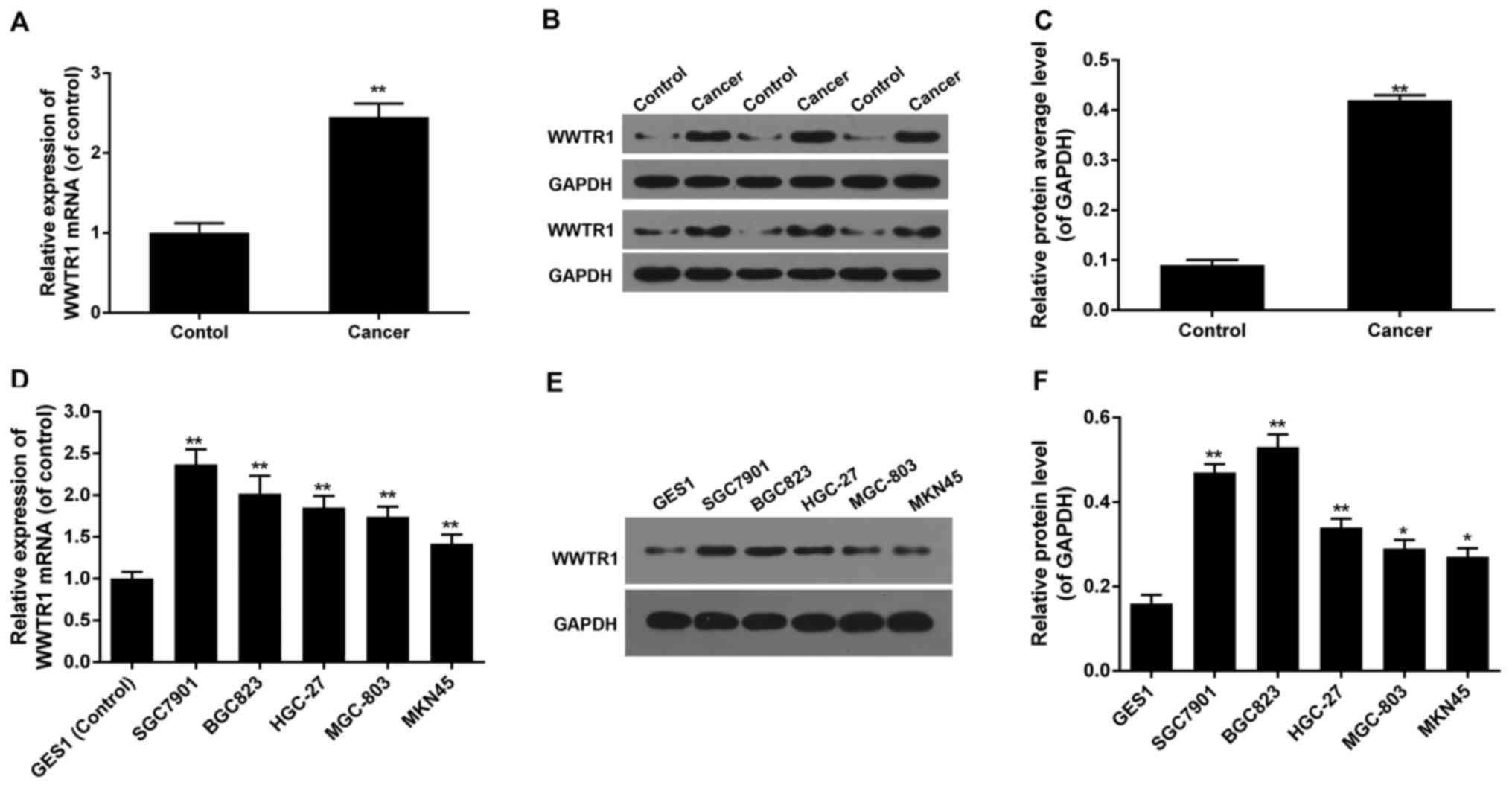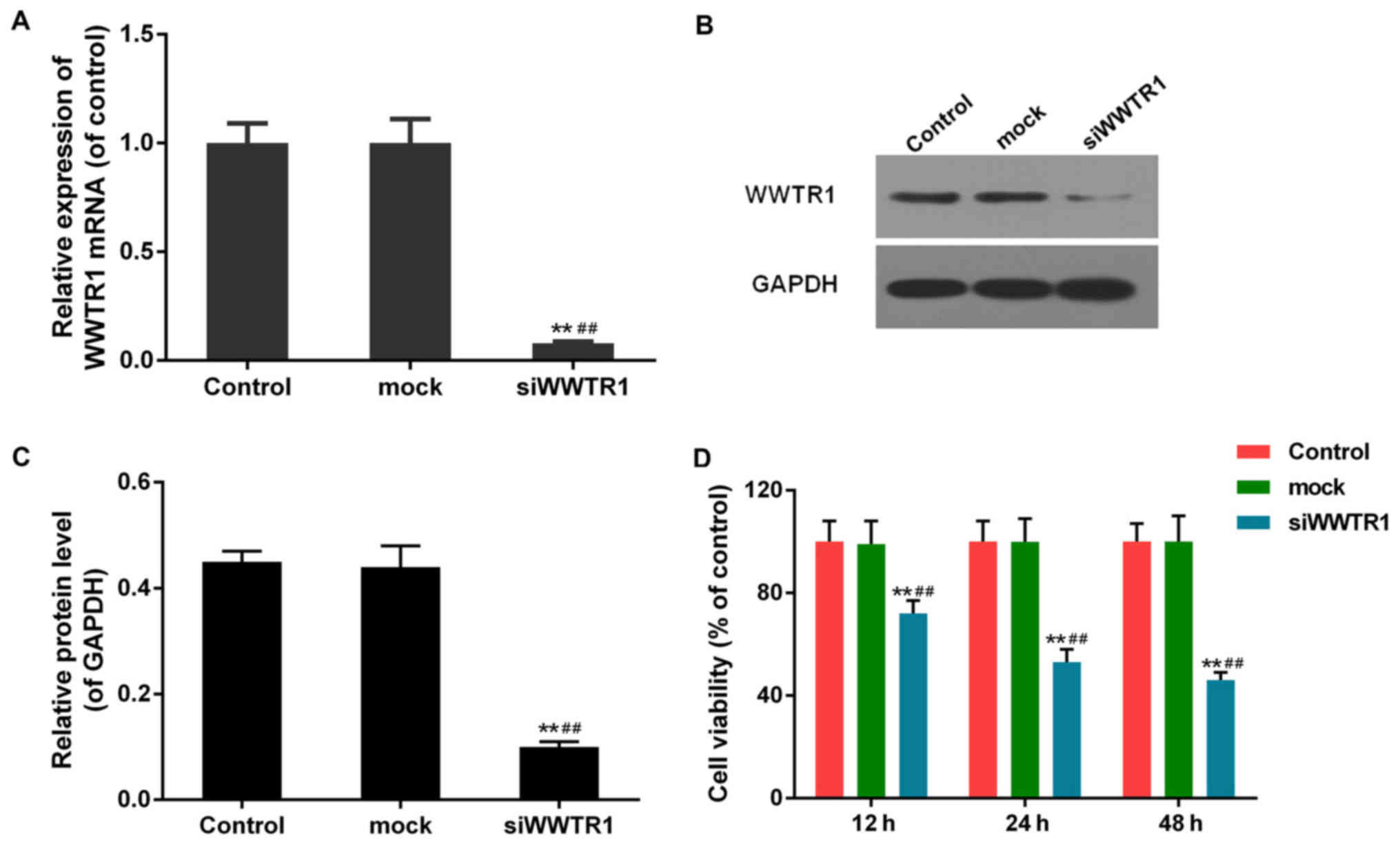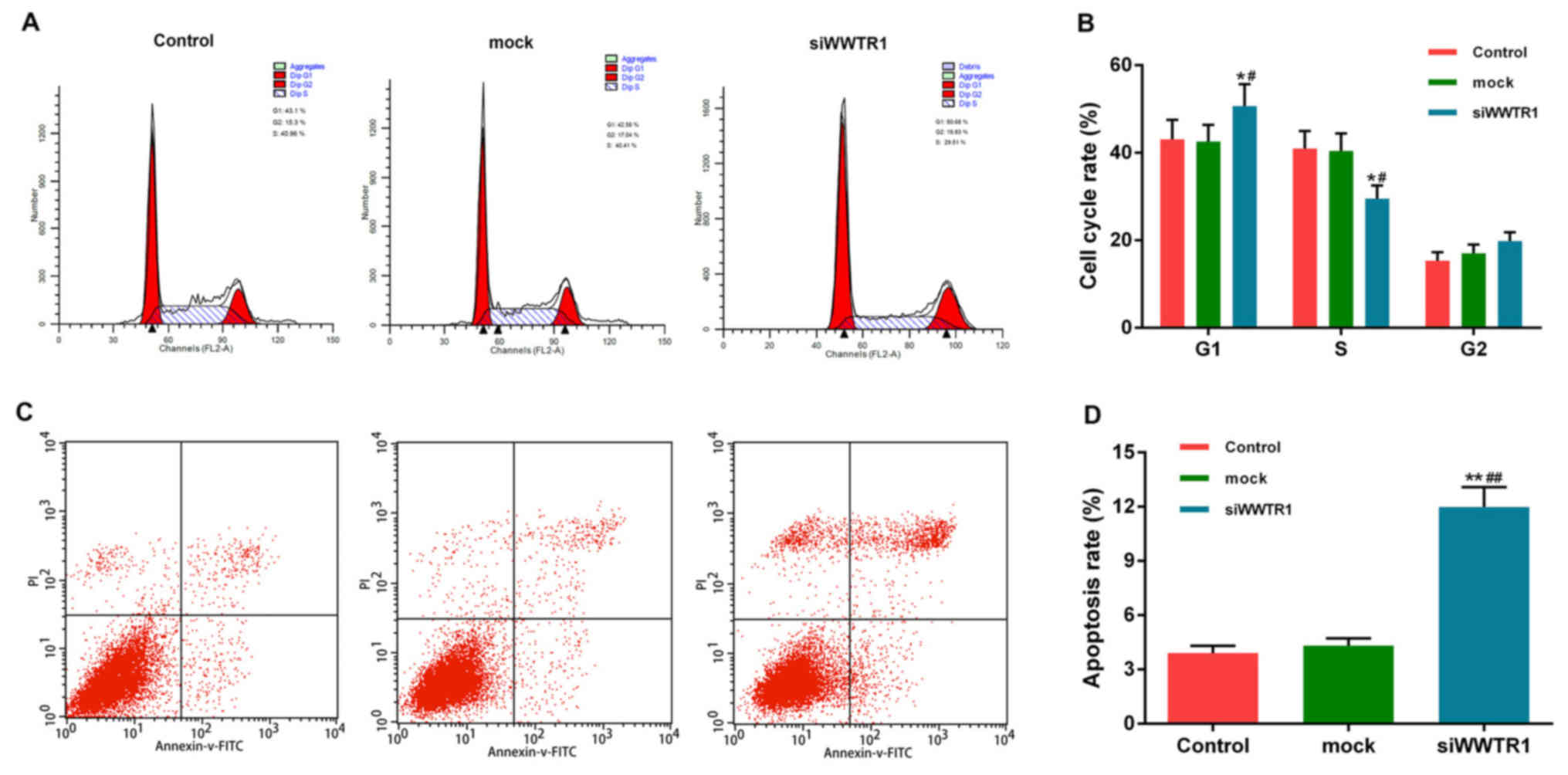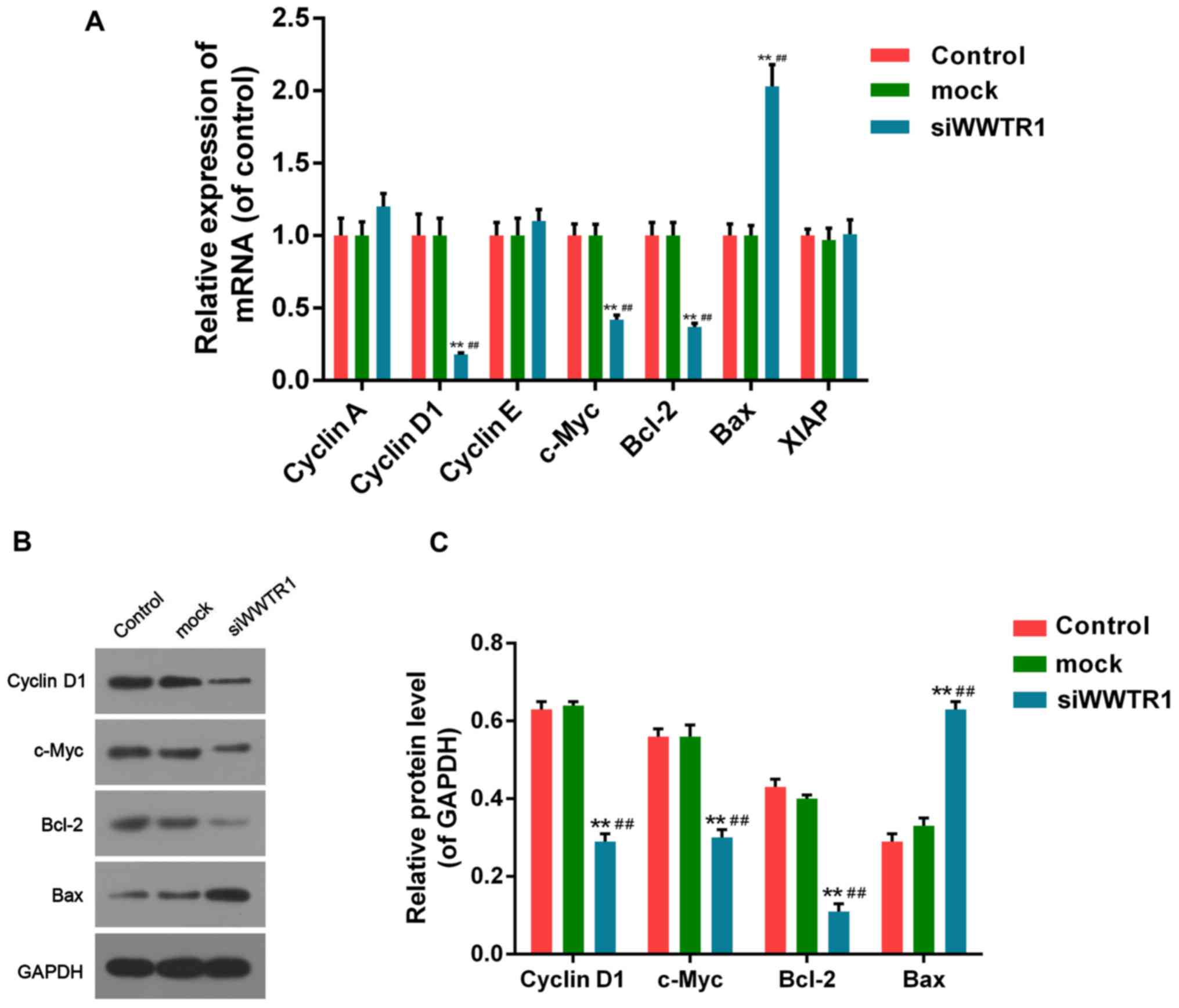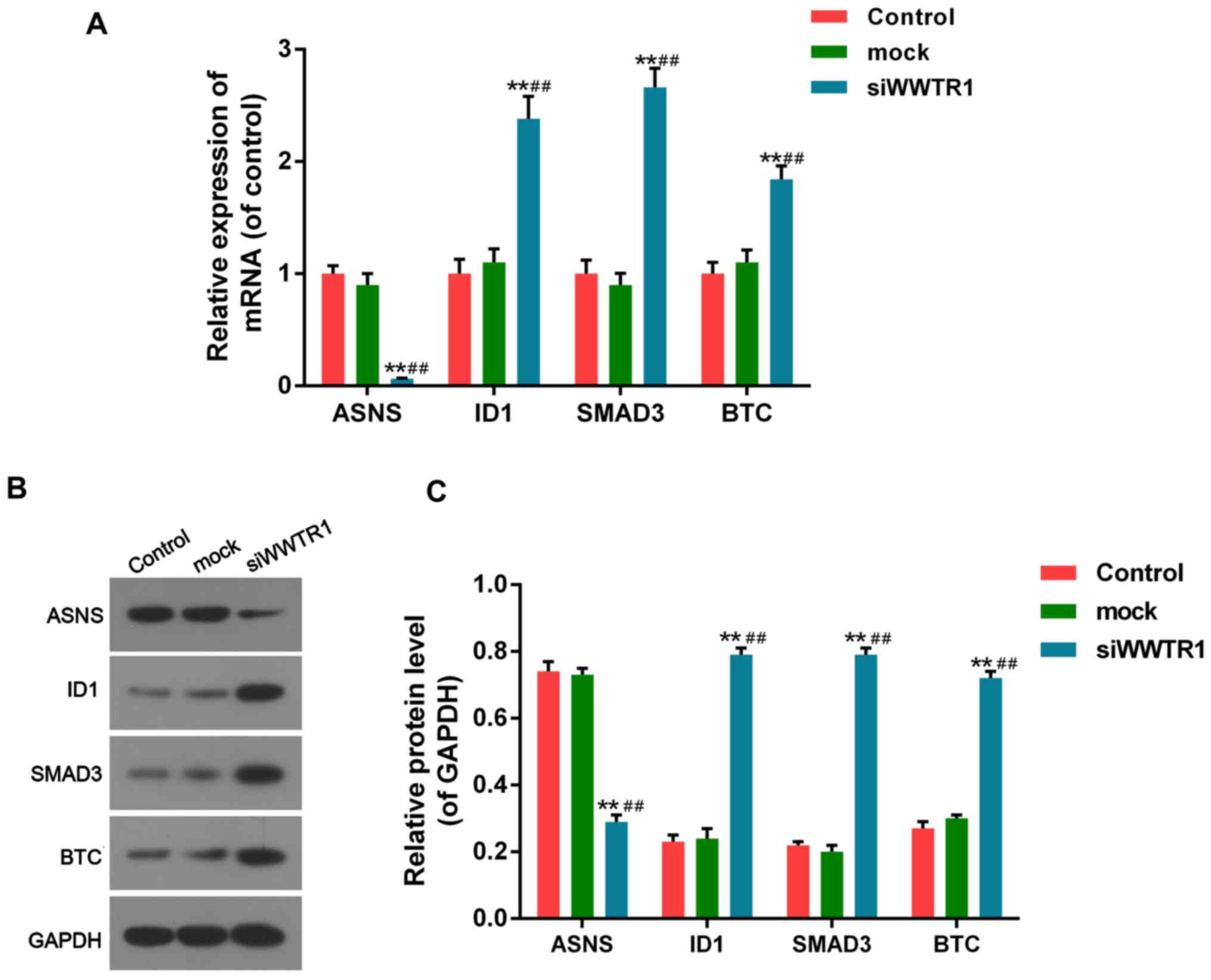|
1
|
Hamashima C: Current issues and future
perspectives of gastric cancer screening. World J Gastroentero.
20:13767–13774. 2014. View Article : Google Scholar
|
|
2
|
Hamashima C, Sasazuki S, Inoue M and
Tsugane S: JPHC Study Group: Receiver operating characteristic
analysis of prediction for gastric cancer development using serum
pepsinogen and Helicobacter pylori antibody tests. BMC Cancer.
17:1832017. View Article : Google Scholar : PubMed/NCBI
|
|
3
|
Bang YJ, Van Cutsem E, Feyereislova A,
Chung HC, Shen L, Sawaki A, Lordick F, Ohtsu A, Omuro Y, Satoh T,
et al: Trastuzumab in combination with chemotherapy versus
chemotherapy alone for treatment of HER2-positive advanced gastric
or gastro-oesophageal junction cancer (ToGA): A phase 3,
open-label, randomised controlled trial. Lancet. 376:687–697. 2010.
View Article : Google Scholar : PubMed/NCBI
|
|
4
|
Yang S, Ji M, Zhang L, Chen Y, Wennmann
DO, Kremerskothen J and Dong J: Phosphorylation of KIBRA by the
extracellular signal-regulated kinase (ERK)-ribosomal S6 kinase
(RSK) cascade modulates cell proliferation and migration. Cell
Signal. 26:343–351. 2014. View Article : Google Scholar : PubMed/NCBI
|
|
5
|
Fujiwara S, Ida H, Yoshioka Y, Yoshida H
and Yamaguchi M: The warts gene as a novel target of the Drosophila
DRE/DREF transcription pathway. Am J Cancer Res. 2:36–44.
2012.PubMed/NCBI
|
|
6
|
Dong J, Feldmann G, Huang J, Wu S, Zhang
N, Comerford SA, Gayyed MF, Anders RA, Maitra A and Pan D:
Elucidation of a universal size-control mechanism in Drosophila and
mammals. Cell. 130:1120–1133. 2007. View Article : Google Scholar : PubMed/NCBI
|
|
7
|
Wu S, Huang J, Dong J and Pan D: Hippo
encodes a Ste-20 family protein kinase that restricts cell
proliferation and promotes apoptosis in conjunction with salvador
and warts. Cell. 114:445–456. 2003. View Article : Google Scholar : PubMed/NCBI
|
|
8
|
Zhao B, Ye X, Yu J, Li L, Li W, Li S, Yu
J, Lin JD, Wang CY, Chinnaiyan AM, et al: TEAD mediates
YAP-dependent gene induction and growth control. Genes Dev.
22:1962–1971. 2008. View Article : Google Scholar : PubMed/NCBI
|
|
9
|
Wang L, Chen Z, Wang Y, Chang D, Su L, Guo
Y and Liu C: TR1 promotes cell proliferation and inhibits apoptosis
through cyclin A and CTGF regulation in non-small cell lung cancer.
Tumour Biol. 35:463–468. 2014. View Article : Google Scholar : PubMed/NCBI
|
|
10
|
Justice RW, Zilian O, Woods DF, Noll M and
Bryant PJ: The Drosophila tumor suppressor gene warts encodes a
homolog of human myotonic dystrophy kinase and is required for the
control of cell shape and proliferation. Genes Dev. 9:534–546.
1995. View Article : Google Scholar : PubMed/NCBI
|
|
11
|
Attisano L and Wrana JL: Signal
integration in TGF-β, WNT, and Hippo pathways. F1000Prime Rep.
5:172013. View
Article : Google Scholar : PubMed/NCBI
|
|
12
|
Böhm I and Schild H: Apoptosis: The
complex scenario for a silent cell death. Mol Imaging Biol. 5:2–14.
2003. View Article : Google Scholar : PubMed/NCBI
|
|
13
|
Zhu M, Li W, Dong X, Chen Y, Lu Y, Lin B,
Guo J and Li M: Benzyl-isothiocyanate induces apoptosis and
inhibits migration and invasion of hepatocellular carcinoma cells
in vitro. J Cancer. 8:240–248. 2017. View Article : Google Scholar : PubMed/NCBI
|
|
14
|
Zhang Y, Xue C, Cui H and Huang Z: High
expression of TAZ indicates a poor prognosis in retinoblastoma.
Diagn Pathol. 10:1872015. View Article : Google Scholar : PubMed/NCBI
|
|
15
|
Edgar BA: From cell structure to
transcription: Hippo forges a new path. Cell. 124:267–273. 2006.
View Article : Google Scholar : PubMed/NCBI
|
|
16
|
Wang P, Liu S, Cheng B, Wu XZ, Ding SS, Xu
L, Liu Y, Duan L and Sun SZ: Promoting effect of cyclin D1
overexpression on proliferation and epithelial mesenchymal
transition of cervical squamous cell carcinoma SiHa cells. Zhonghua
Bing Li Xue Za Zhi. 46:187–192. 2017.(In Chinese). PubMed/NCBI
|
|
17
|
Zhou L, Wu F, Jin W, Yan B, Chen X, He Y,
Yang W, Du W, Zhang Q and Guo Y: Theabrownin inhibits cell cycle
progression and tumor growth of lung carcinoma through
c-myc-related mechanism. Front Pharmacol. 8:752017. View Article : Google Scholar : PubMed/NCBI
|
|
18
|
Sims EK, Lakhter AJ, Anderson-Baucum E,
Kono T, Tong X and Evans-Molina C: MicroRNA 21 targets BCL2 mRNA to
increase apoptosis in rat and human beta cells. Diabetologia.
60:1057–1065. 2017. View Article : Google Scholar : PubMed/NCBI
|
|
19
|
Luwor RB, Hakmana D, Iaria J, Nheu TV,
Simpson RJ and Zhu HJ: Single live cell TGF-β signalling imaging:
Breast cancer cell motility and migration is driven by
sub-populations of cells with dynamic TGF-β-Smad3 activity. Mol
Cancer. 14:502015. View Article : Google Scholar : PubMed/NCBI
|
|
20
|
Dai F, Lin X, Chang C and Feng XH: Nuclear
export of Smad2 and Smad3 by RanBP3 facilitates termination of
TGF-beta signaling. Dev Cell. 16:345–357. 2009. View Article : Google Scholar : PubMed/NCBI
|
|
21
|
Xu J and Attisano L: Mutations in the
tumor suppressors Smad2 and Smad4 inactivate transforming growth
factor beta signaling by targeting Smads to the
ubiquitin-proteasome pathway. Proc Natl Acad Sci USA. 97:pp.
4820–4825. 2000; View Article : Google Scholar : PubMed/NCBI
|
|
22
|
Petersen M, Pardali E, van der Horst G,
Cheung H, van den Hoogen C, van der Pluijm G and Ten Dijke P: Smad2
and Smad3 have opposing roles in breast cancer bone metastasis by
differentially affecting tumor angiogenesis. Oncogene.
29:1351–1361. 2010. View Article : Google Scholar : PubMed/NCBI
|
|
23
|
Yu Y, Liang Y, Yin C, Liu X, Su Y, Zhang L
and Wang H: Inhibitor of DNA-binding 1 promotes endothelial
progenitor cell proliferation and migration by suppressing E2-2
through the helix-loop-helix domain. Int J Mol Med. 38:1549–1557.
2016. View Article : Google Scholar : PubMed/NCBI
|
|
24
|
Zhao Y, Luo A, Li S, Zhang W, Chen H, Li
Y, Ding F, Huang F and Liu Z: Inhibitor of differentiation/DNA
binding 1 (ID1) inhibits etoposide-induced apoptosis in a
c-Jun/c-Fos-dependent manner. J Biol Chem. 291:6831–6842. 2016.
View Article : Google Scholar : PubMed/NCBI
|
|
25
|
Singh B, Carpenter G and Coffey RJ: EGF
receptor ligands: Recent advances. F1000Res. 5:pii: F1000 Faculty
Rev–2270. 2016. View Article : Google Scholar
|
|
26
|
Xu Y, Lv F, Zhu X, Wu Y and Shen X: Loss
of asparagine synthetase suppresses the growth of human lung cancer
cells by arresting cell cycle at G0/G1 phase. Cancer Gene Ther.
23:287–294. 2016. View Article : Google Scholar : PubMed/NCBI
|



